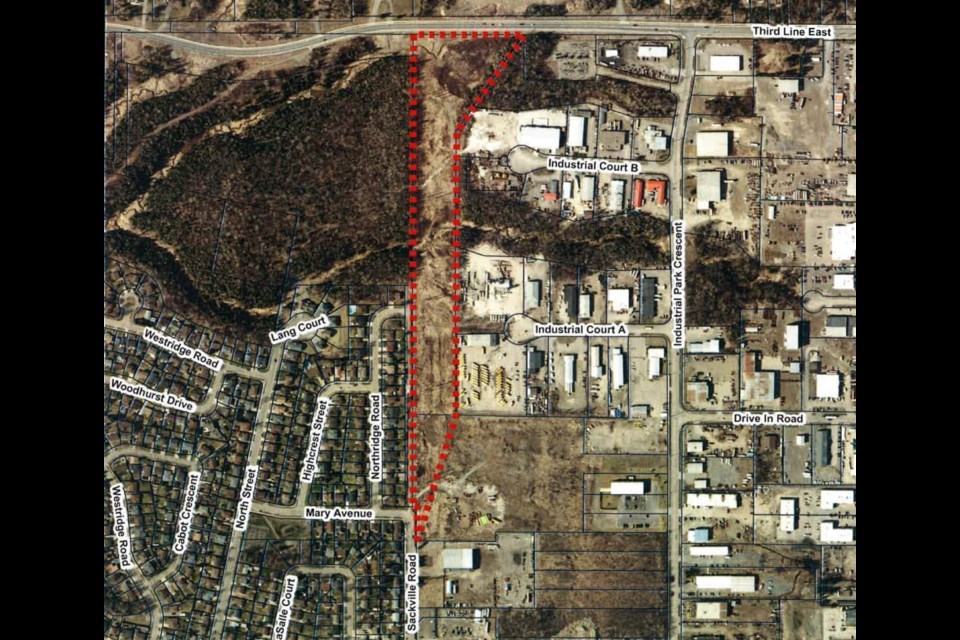City officials are lining up early construction work next year in preparation for the long-awaited Sackville Road extension, a critical part of their plan to address Great Northern Road congestion between Second and Third Line.
"The early works contract focuses on a ravine crossing which includes installing a large box culvert and required fill placed above the culvert to build the road on," says Carl Rumiel, the city's director of engineering.
"The second phase constructing the services and the road is proposed for 2026," Rumiel says in a report prepared for Mayor Matthew Shoemaker and ward councillors.
A Schedule C municipal class environmental assessment was completed on the proposed Sackville extension back in 2012 but "construction did not commence due to other priorities," Rumiel said.
On Monday night, the extension was approved in principle by city council as part of the city's five-year capital transportation program covering 2025 to 2029.
"Council is not being asked to approve the 2025 capital roads budget this evening," Rumiel said.
"However, it is necessary to procure engineering services to proceed with field data acquisition and begin design of 2025 capital road projects to ensure timely tenders in the new year.
"Capital road improvements for the City of Sault Ste. Marie are carried out under various programs including capital road construction, infrastructure improvement programs and the connecting links program.
"The capital transportation program prioritizes reconstruction of arterial and collector streets, which are critical to the movement of traffic while at the same time attempting to address some of the numerous needs of local residential streets as well as to make improvements to key areas of the community.
"Road sections are recommended for the capital transportation program based primarily on pavement condition index scores which are tabulated based on road condition in the asset management program.
"All road sections are evaluated and scored based on many factors, including but not limited to: road surface condition, road structure, surface drainage, etc. Age and condition of water mains, sanitary and storm sewers, level of maintenance, and traffic volumes are also considered when selecting a road section for reconstruction.
"An attempt is made to keep the mix between arterials, collectors and local streets balanced," Rumiel said.
Resurfacing of Great Northern Road between Third Line and Wigle Street has been selected as the designated project for the city's application to the 2025 connecting link program.
Another top priority is a reconstruction of Peoples Road.
City staff have applied for funding for that project from the Ontario Ministry of Transportation's connecting link fund and from a housing enabled water system fund.
"Should the city be unsuccessful in either of these funding applications, the program will be amended by cancelling other capital transportation projects in order to align with available funding," Rumiel said.
He said completing the Sackville extension will bring the following benefits:
- elimination of an aged sewage pumping station on Industrial Court B. If the road is not extended as planned, the city will be required to reconstruct this sewage pumping station and forcemain
- opening of developable residential lands west of the Sackville Road extension
- extension of a multi-use trail adjacent to the new road to provide a north-south connection to the Hub Trail
- drainage improvements at the Sackville Road and Mary Avenue intersection.
"If the Sackville Road extension was postponed further, the city would have to construct permanent drainage improvements on Sackville Road and a new sanitary pump station with forcemain," Rumiel said.
"The immediate financial implications of not proceeding with Sackville would be in the range of $4 million to $5 million. The extension of Sackville provides the most cost-effective solution to a number of community needs."
